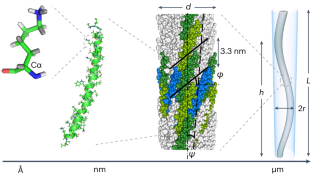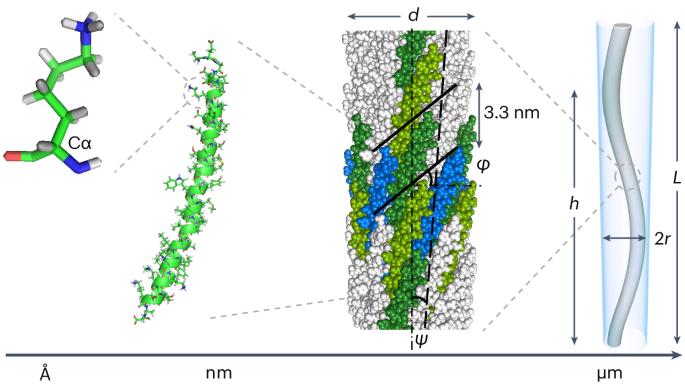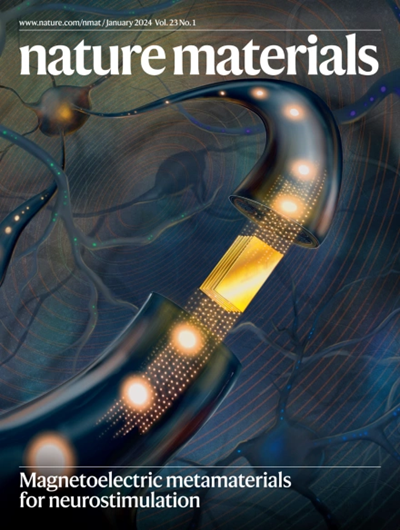阐明病毒液晶中的手性转移
IF 37.2
1区 材料科学
Q1 CHEMISTRY, PHYSICAL
引用次数: 0
摘要
手性在自然界的所有长度尺度上无处不在,其重大影响横跨生物、化学、物理和材料科学等领域。手性如何从纳米级构件传播到中观和宏观螺旋结构仍是一个悬而未决的问题。在这里,我们通过一个典型的丝状病毒系统证明,病毒自组装成手性液晶相的定量结果来自手性传递的两个主要机制之间的相互作用:病毒表面螺旋电荷模式产生的静电相互作用,以及基于波动的螺旋变形导致的病毒骨架螺旋性。我们的实验和理论方法为破译手性如何在空间尺度上分层和定量传播提供了一个全面的框架。我们的工作强调了超分子螺旋性可能来自于相反手性的微妙手性贡献的方式,这些手性贡献或相互合作或相互竞争,从而解释了在几乎相同的分子体系中观察到的多种手性行为。本文章由计算机程序翻译,如有差异,请以英文原文为准。


Elucidating chirality transfer in liquid crystals of viruses
Chirality is ubiquitous in nature across all length scales, with major implications spanning fields from biology, chemistry and physics to materials science. How chirality propagates from nanoscale building blocks to meso- and macroscopic helical structures remains an open issue. Here, working with a canonical system of filamentous viruses, we demonstrate that their self-assembly into chiral liquid crystal phases quantitatively results from the interplay between two main mechanisms of chirality transfer: electrostatic interactions from the helical charge patterns on the virus surface, and fluctuation-based helical deformations leading to viral backbone helicity. Our experimental and theoretical approach provides a comprehensive framework for deciphering how chirality is hierarchically and quantitatively propagated across spatial scales. Our work highlights the ways in which supramolecular helicity may arise from subtle chiral contributions of opposite handedness that act either cooperatively or competitively, thus accounting for the multiplicity of chiral behaviours observed for nearly identical molecular systems. The authors investigate the origins of chirality transfer across length scales, quantitatively demonstrating how chirality propagates from the molecular to liquid crystal level in filamentous virus systems.
求助全文
通过发布文献求助,成功后即可免费获取论文全文。
去求助
来源期刊

Nature Materials
工程技术-材料科学:综合
CiteScore
62.20
自引率
0.70%
发文量
221
审稿时长
3.2 months
期刊介绍:
Nature Materials is a monthly multi-disciplinary journal aimed at bringing together cutting-edge research across the entire spectrum of materials science and engineering. It covers all applied and fundamental aspects of the synthesis/processing, structure/composition, properties, and performance of materials. The journal recognizes that materials research has an increasing impact on classical disciplines such as physics, chemistry, and biology.
Additionally, Nature Materials provides a forum for the development of a common identity among materials scientists and encourages interdisciplinary collaboration. It takes an integrated and balanced approach to all areas of materials research, fostering the exchange of ideas between scientists involved in different disciplines.
Nature Materials is an invaluable resource for scientists in academia and industry who are active in discovering and developing materials and materials-related concepts. It offers engaging and informative papers of exceptional significance and quality, with the aim of influencing the development of society in the future.
 求助内容:
求助内容: 应助结果提醒方式:
应助结果提醒方式:


